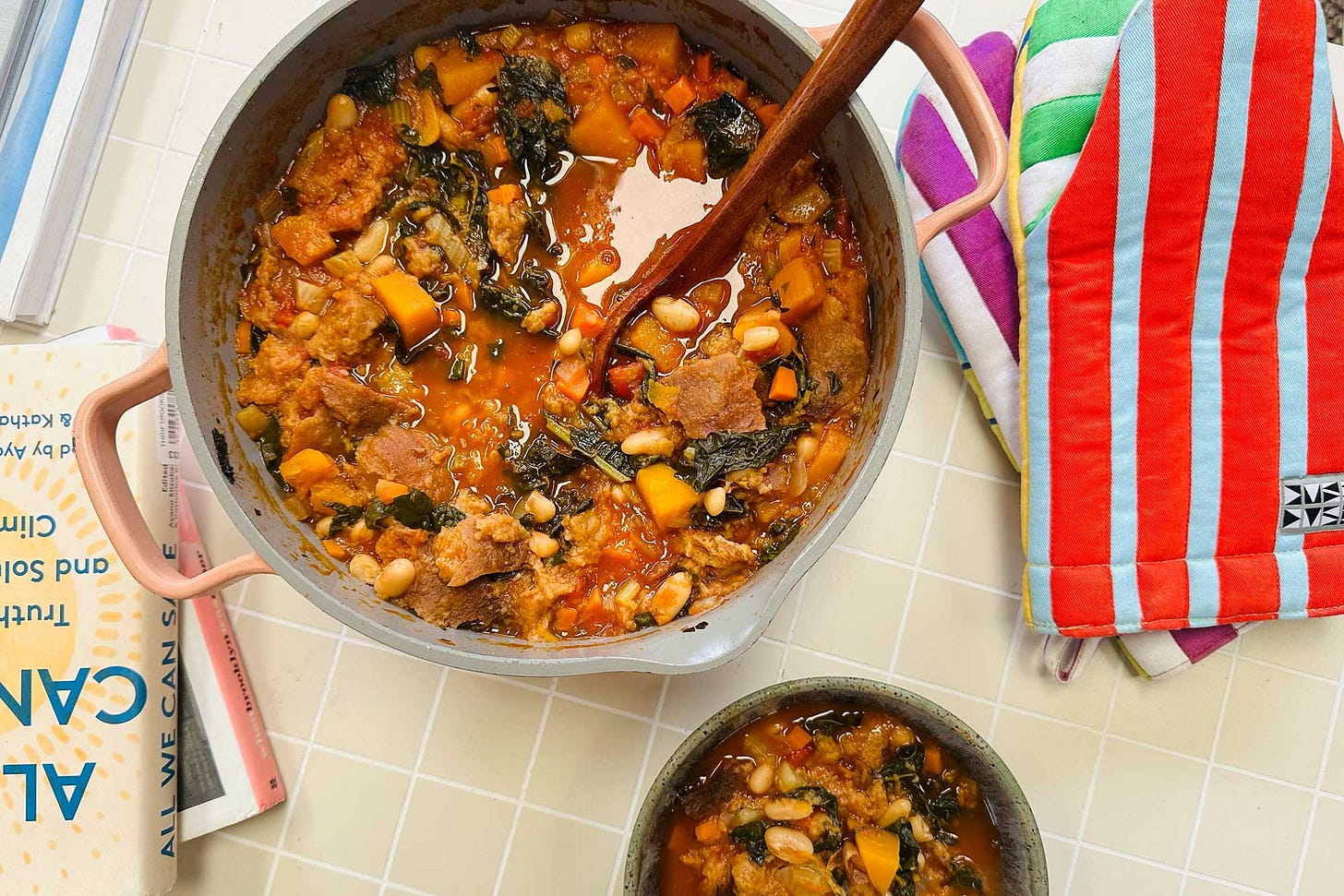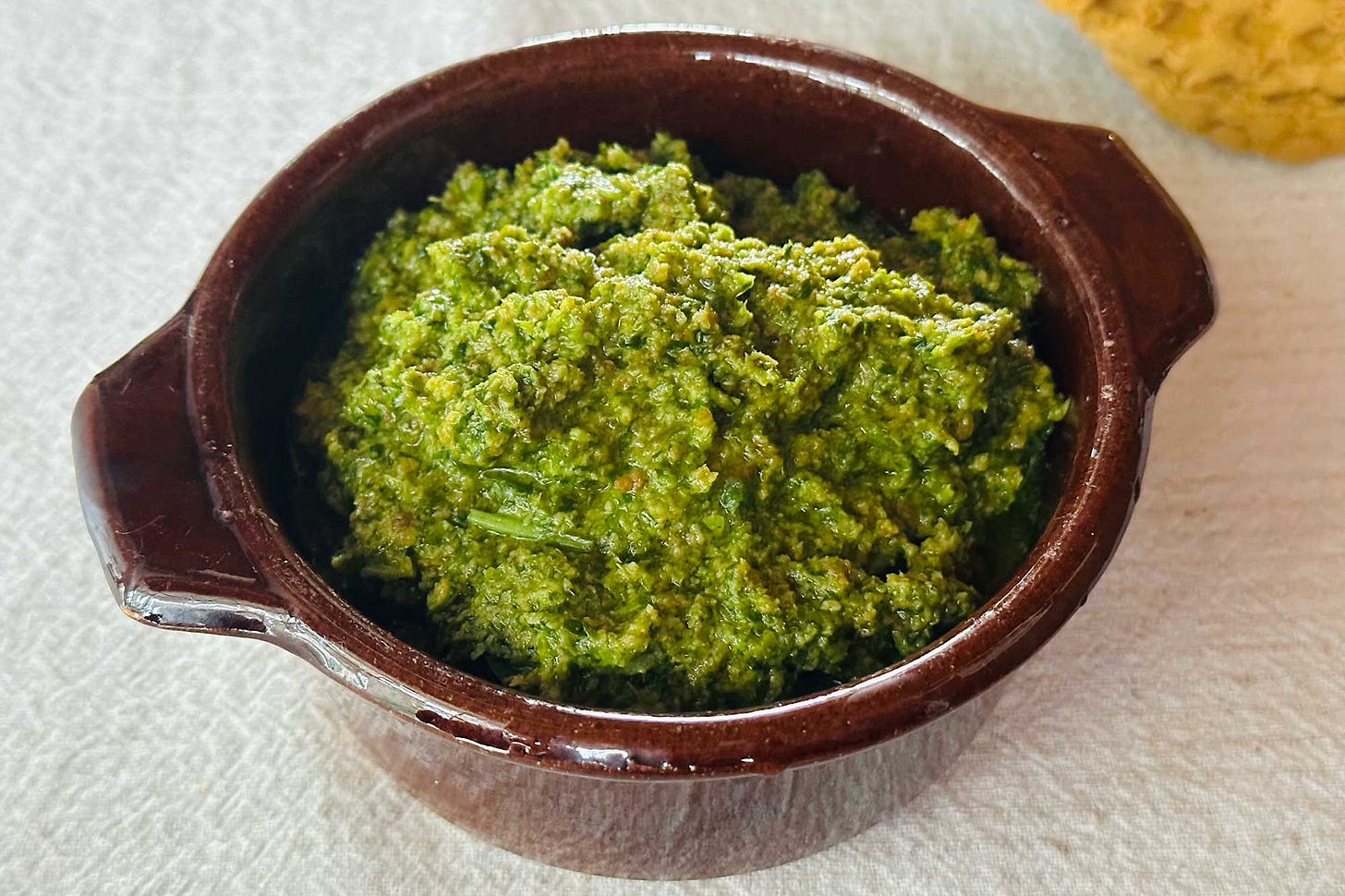The best thing since sliced bread is stale bread
Our tips for extending the life of an often-wasted staple
Hey friends, and welcome back to Cool Beans—and another week of using up leftovers. Today’s subject is bread, which accounts for 1.4 million tons of household waste each year (that’s the caloric equivalent of 3.1 billion meals). For our purposes, I’m not talking about just any bread. I’m talking about those eye-candy baguettes, boules, and country loaves you see at the bakery counter or farmers market. Unlike grocery store loaves that are packed with extra ingredients to keep them soft and supple for weeks, homemade and bakery breads contain little more than flour, salt, water, and yeast (or sourdough starter, if you hopped on that pandemic bandwagon).
These carbs beckon us with their rustic charm, toothy crust, and ability to make superior toast. Sadly, they also die young. Today I’m sharing some tried and tested methods for storing a fresh loaf (spoiler: NOT in the fridge) and how to use it up when it starts to lose its luster. Then I’m finishing up with a cozy, stick-to-your-ribs dinner where stale bread is the star.
The overview: Extend the life of your loaf
There’s no getting around the fact that fresh bread is best enjoyed the day it’s baked. Stale loaves are inevitable, but there are some smart storage options that can extend that window of deliciousness from a couple of days to a couple of months. No matter which route you take, never, ever stick it in the fridge. Staling happens as bread cools and dries out, causing the starches inside the loaf to crystalize, ultimately resulting in unpalatable, hard bread. When fresh bread sits in cold (but not freezing) temperatures like the ones in the fridge, this process accelerates. I suggest one of the following methods instead.
1-5 days: The bread bag
Plastic bags don’t breathe well, which can accelerate mold, and paper bags let in too much air, which means rock hard loaves by day three. Linen or cotton bread bags are not only cute and sustainable (this is the one I use), but they also allow the just-right level of breathability. Drawstring enclosures allow for some airflow, but not so much that bread dries too quickly. After all, there’s a reason the French have used this technique for ages.
5-7 days: The breadbox
Breadboxes work by eliminating light exposure, which leads to mold, and creating an extra layer of defense against excess humidity and airflow. This balanced environment keeps loaves soft on the inside and crusty on the outside. I find that bread stored in a breadbox (mine’s “vintage,” and eBay is absolutely full of ’em) lasts for about five days and up to a week. Store cut loaves with the crumb sides facing each other, and slice as you go to prevent slices from drying out.
2-3 months: The freezer
Sliced bread is a godsend in the freezer. The chiller eliminates the possibility of mold, and slices are easy to pull out and pop in the toaster or oven. You can put whole loaves in cold storage, too. To thaw a whole loaf, stick it in the oven at 325 degrees for about 25 minutes—or until it’s no longer frozen in the middle.
DO MORE WITH YOUR FREEZER
For more tips on maximizing your cold storage, check out our super-cool special series Cookin’ with Ice
The point of no return
Improving your bread storage strategy is a good first step, but unless you’re freezing it, all those precious carbs will eventually go stale. But the good news is that scrappy cooks have used stale loaves for ages as a means to bulk up soups and stews or fill out desserts and even sauces.
Take bagnet vert, for example. This northern Italian sauce is sometimes referred to as “poor man’s pesto” since it swaps pricey pine nuts for ubiquitous breadcrumbs. Basil is also replaced with parsley, but the classic olive oil and garlic are still present, plus some vinegar for zing. To make it, just blitz everything together—along with some optional anchovies and/or capers for an added flavor punch—until it’s the consistency of pesto. Serve it alongside roasted veggies, drizzle it on some cooked beans, or bring it full circle and smear it on toast.
Of course there are dozens of other ways to make stale bread a centerpiece—including panzanella, bread pudding, French toast, or homemade croutons and breadcrumbs. My absolute favorite way to use it up this time of year, like bagnet vert, also has roots in Italy, but this time the end result is a whole cozy meal you can adapt for the seasons.
The recipe: The secret ingredient to this hearty soup is stale bread
I bake sourdough weekly, mostly for breakfast toast, which means I accumulate a lot of bread butts. I’ve developed a ritual to put them to good use: I tear them into chunks, then store them in a designated gallon-size bag in the freezer. When the bag gets full, I make ribollita. This traditional Tuscan soup is made with vegetables and beans and thickened with stale bread. The word ribollita translates to “reboiled,” as this soup was traditionally made by doing just that with leftover beans and greens. The addition of bread helps make it more satisfying. It’s perfect when the weather calls for something warm and brothy, but you need something a bit heartier. I like to swap the veggies with the seasons, and this winter squash version is on heavy rotation right now.

Winter Squash Ribollita
Serves 4 to 6





